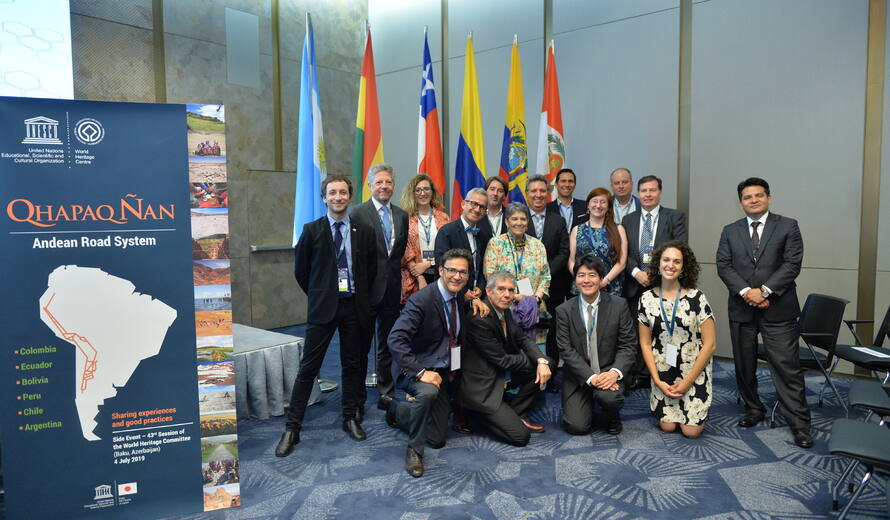Six countries share experiences and celebrate Qhapaq Ñan cooperation
On 4 July 2019, a special event devoted to the theme "Qhapaq Ñan, Sharing experiences and good practices" brought together representatives of Argentina, Bolivia, Chile, Colombia, Ecuador and Peru with the aim of sharing their collaborative achievements in management and conservation of this serial and transboundary World Heritage site.
Participants presented concrete and important results upon completing the extra-budgetary project financed by the UNESCO/Japanese Funds-in-Trust for the Preservation of the World Cultural Heritage. The event took place within the framework of the 43rd session of the World Heritage Committee held from 30 June to 10 July 2019 in Baku, Azerbaijan.
Inscribed on the World Heritage List in 2014, this site is the most representative and exceptional example of the extensive Inca communication, trade and defence network of roads that once covered 30,000 km. This extraordinary network through one of the world’s most extreme geographical terrains linked the snow-capped peaks of the Andes – at an altitude of more than 6,000 m – to the coast, running through hot rainforests, fertile valleys and absolute deserts. It reached its maximum expansion in the 15th century, when it spread across the length and breadth of the Andes. The Qhapaq Ñan, Andean Road System includes 273 component sites spread over more than 6,000 km that were selected to highlight the social, political, architectural and engineering achievements of the network, along with its associated infrastructure for trade, accommodation and storage, as well as sites of religious significance.
For this side event, representatives of the six Qhapaq Ñan National Technical Secretariats had the opportunity to illustrate the diversity and exceptional value of this property, as well as to give accounts of the activities, achievements, difficulties and opportunities encountered during the recent years of implementation of the project supported by Japan. The fundamental role played by local communitities in processes of decision-making, conservation, valorization and continued use of the Qhapaq Ñan was a unique and preeminent aspect reiterated throughout the event.
The audience, including representatives of several States Parties, civil society, NGOs, heritage experts and students, was able to witness the complexity of the site and efforts made toward its valorization, and to better understand the future perspectives foreseen to continue consolidating efforts in favor of its conservation and management. The continuity and strengthening of regional cooperation was emphasized, as well as the joint will of the six participating countries to continue with this collective initiative, while awaiting new possibilities for international support.


